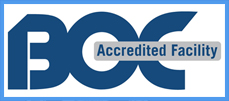How are Custom Orthotics Casted?
Corey's Bootery has the latest technology available in the fabrication of custom inserts. With the use of the Delcam IQUBE, our Certified Pedorthists are able to take a 3D scan of the foot. With the use of Aerospace technology, the scanner is able to capture the foot within a hair's width of accuracy. This is unheard of in other casting techniques such as foam or plaster casting, which are most commonly used. Corey's Bootery uses this image to create a 100% custom-made foot orthotic for your feet.
Custom orthotics can be made many different ways. One of the most common ways is by the use of a foam box. In this method the patient is either standing or sitting and the foot is pressed into a box of foam that captures the bottom aspect of the foot. This can be good for some feet, however it may lack accuracy. This is one of the least accurate ways of capturing a cast of the foot. The foam expands as the foot is pressed down and can create a wider image of the foot. Foam impressions can also allow the foot to be maligned as it is pushed downward, creating a false image of the foot. The benefits of a foam box however, are cleanliness, ease of use, and speed.
Custom Orthotics
Plaster bandage can also be used to cast the foot for a custom orthotic. This technique is the 2nd most accurate method. Plaster casting can be very time consuming and messy, so it is not often used. This method allows for the natural position of the foot to be captured for a more precise fitment. This is mainly used when fabricating a plastic orthotic that requires great detail.
Corey's Bootery's Certified Pedorthists have used all three techniques and are specifically trained in each. This allows for the pedorthist to use the proper casting technique for your foot. The 3D Delcam scanner is most commonly used due to its efficiency, accuracy and cleanliness when casting custom orthotics. People travel from Grand Rapids, Mi. and the surrounding area all the way to Kalamazoo for our unique custom insoles.

